A reader asked about Super Mario World, one of my all-time favorite games. Here’s the query:
I was watching a speed run of Super Mario World, and I noticed in the “Special World” (the world accessed by completing the Star Road), all of the names of the levels are typical 90’s American Surfer lingo (“tubular, mondo, outrageous”).
I was wondering what the level names are in the Japanese version.
So let’s take a look at them all side-by-side:
So it looks like the Japanese names weren’t anything too radical or funky – they’re mostly ordinary-sounding names. What’s more, each special course name gets used twice in the Japanese version, which is a bit confusing. They don’t even have numbers, like “Fun Course 1” or “Fun Course 2”.
I also had a couple random thoughts when looking through these:
- It’s interesting that the Super Famicom logo was used in the English version of the game, or at least the American version of the game. I think the European logo might be the same as the Japanese logo, so maybe it wasn’t so out of place there. But I’m almost certain the American Super NES logo was something gray and black and a little different from this.
- I wonder why the localizers decided to use these slang terms in the first place. I don’t usually think of words like “gnarly” and “radical” when playing Mario games.
- I wonder what other similar slang words from the era could be used too. I think “So Bad” would’ve been a cool nod to the era and to The Wizard… but I wonder what other terms could’ve been used too. If you have any ideas, share them in the comments.
So there we go – The Japanese names are pretty basic and simple and get the job done… but the English version is totally wicked to the max.
Related to this is another follow-up question: what does the “YOU ARE A SUPER PLAYER!!” line at the end of the final special course say in Japanese?
Here’s a look at the original Japanese version:
 |
And here’s the English version:
 |
It looks like Nintendo’s localizers took the time to fix even this secret little thing by giving it proper grammar. It also means that people playing the English version can get a few more coins than Japanese players. Neat!


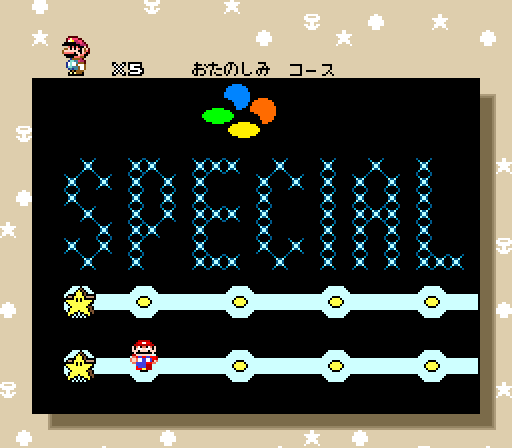
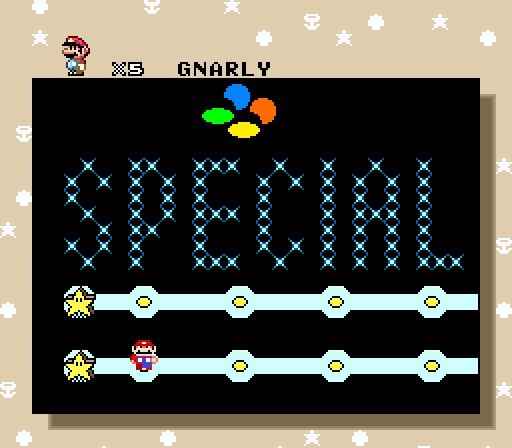
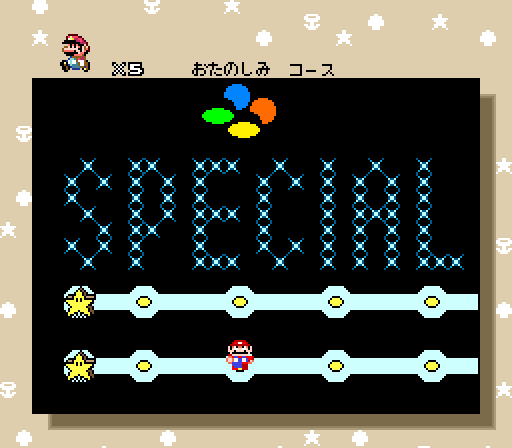

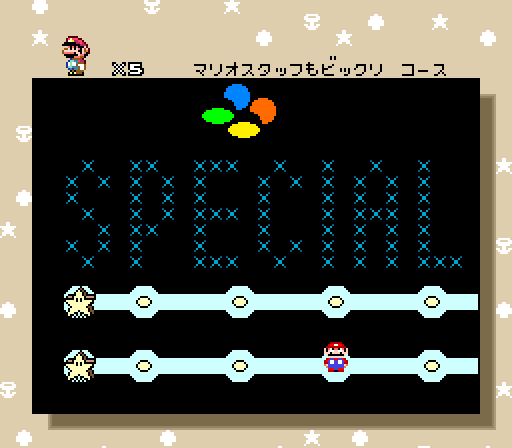
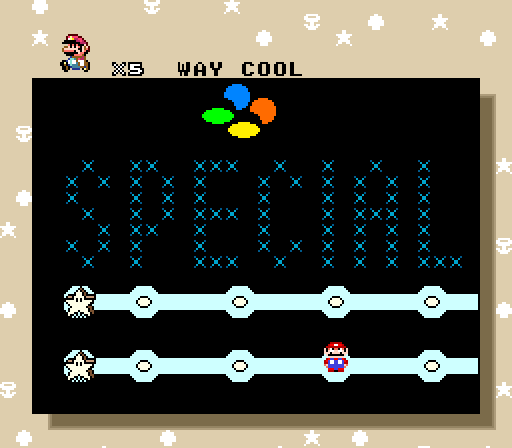


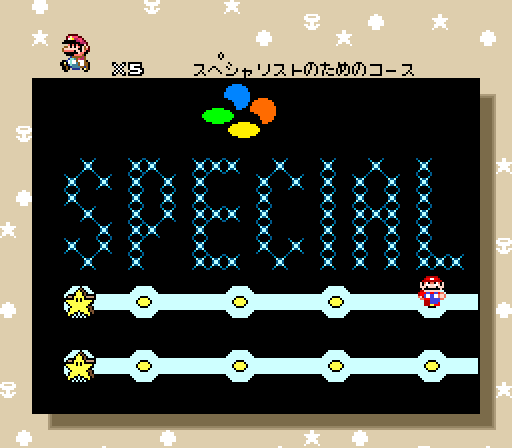
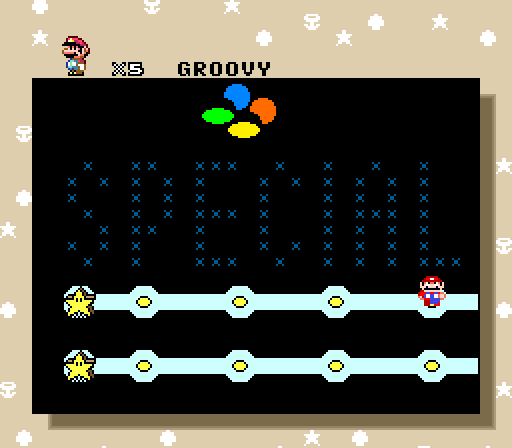
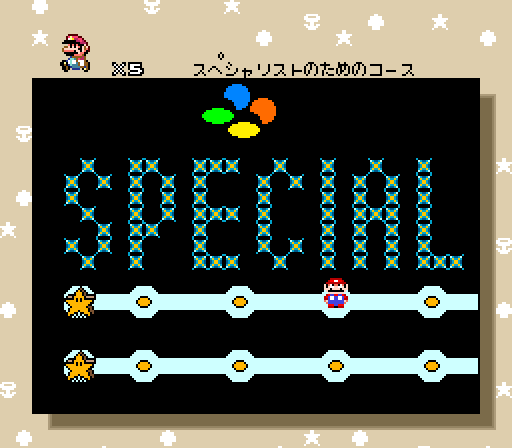



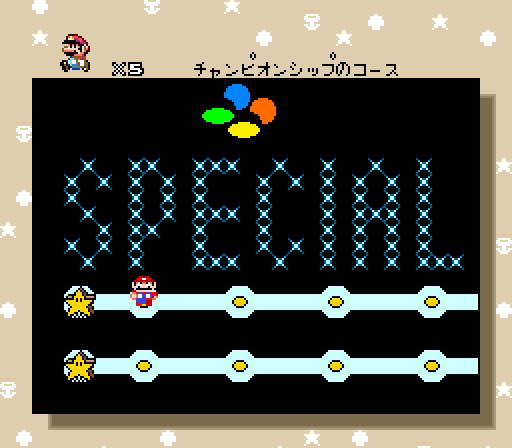
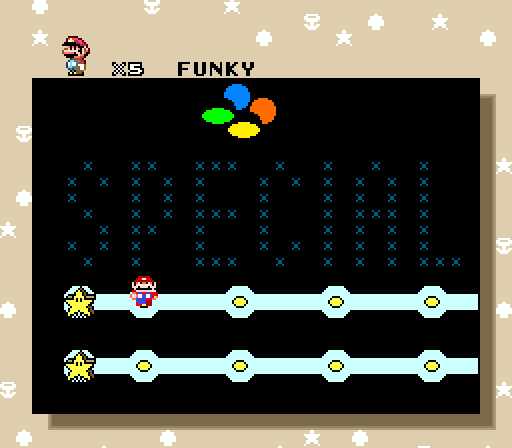

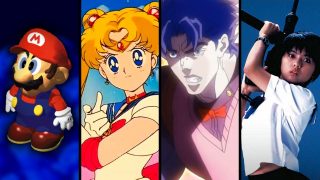

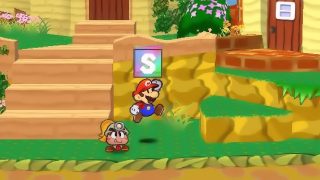
Not recognizing the Super Famicon logo as a child, I assumed those were stylized Yoshi eggs.
Speaking of Super Mario World, the Forest of Illusion is called “Mayoi no Mori” in the Japanese version. Sound familiar?
Yeah, “mayoi no mori” is a pretty common thing in Japanese entertainment, I can’t keep track of how many times I’ve run into it. Besides Zelda, another that instantly pops into my head is the One Piece series. I guess it’s just one of those things that Japanese creators tend to draw from.
There’s like three different forests in Pokemon named that, too.
Obligatory Tubular was far from a fun course comment. 🙂
It was maddeningly hard because you could bring power-ups from another stage to help – stupid baseballs.
Had Super Mario World come out in the mid-90s, some of the stage names would have been “Sick”, “Tight”, and “Da Bomb.”
Wow, this is so weird… I was seriously wondering about this the other day, and sure enough you’ve made an article on it! …I must use this power for good!
I remember reading that you could fail NoA’s lot check back in the SNES era for leaving the controller buttons in their original SFC/PAL coloration. I guess that didn’t apply to the logo and/or first party titles (at least not at the time SMW was released).
Actually, come to think of it, it’s not that related but I have SNES controller with the SFC logo on the back, I think it even say Super Famicom, and it has a Nintendo logo on the front instead of the printed SNES branding. Still has the US button style, though. So at some point, NoA was more willing to use the SFC branding on stuff sold in the US.
SMW was a launch title, so maybe Nintendo just hadn’t finalised all the branding stuff when the game was being localised? They might have been intending at that point to retain the SFC logo in the US (as they did in PAL regions).
(btw I think the controller you have is from quite late in the console’s life – they seem to have been packed in with the redesigned SNES or sold separately around the same time, so I guess at that point they were just using the same moulds for both the US and Japan to save money)
Good point about it being a launch title, even if they had changed the standards by the time it got released people who knew about the special courses well enough make a change had probably moved on to other projects by the time they decide how to do the branding
Well, this isn’t quite the same. The rules are so your controller diagrams match the real-world controllers they’re supposed to be illustrating.
Mario World isn’t illustrating the controller buttons, per se. It’s “just a logo.”
The fact that the logo is a stylized SNES button quad is irrelevant.
It’s not the only game to retain japanese branding, either.
Robotrek has a computer that’s basically a giant Super Famicom pad with a monitor on it, but they weren’t forced to recolor the buttons to be purple and lavender. They aren’t the actual real-world controller buttons, so it’s all cool.
Totally different situation than the battle menu in Mario RPG, for example, where they aren’t even button-shaped, but as they correspond to the real-world inputs, the SFC coloration was replaced with SNES colors.
With “YOU ARE SUPER PLAYER!!” being altered to “YOU ARE A SUPER PLAYER!!”, I wonder why the localizers did not do the same thing to the Super Mario All-Stars version of Super Mario Bros.: The Lost Levels’s World 9-4, which has 「アリガトウ!」 carved out of underwater ground tiles. It was the game’s debut appearance outside of Japan, yet surely Nintendo thought that some Americans and Europeans would discover the secret of World 9? I suspect that modifying the level was technically difficult, requiring the rearrangement of game resources or expansion of ROM size, but I do not know for sure. (Map of original Famicom Disk System version here: http://www.mariowiki.com/File:SMBTLL_World_9-4.png)
By the way, Mato, why are your posts signed with your real name now?
Nintendo well more than expected people to discover World 9 — they made a huge deal of it, and even ran a contest to win a special “World 9” patch by sending in a photo of yourself playing World 9. The contest went so far as to explain how to get there, too. So, yeah, Nintendo knew people would find it. 🙂
It’d probably be difficult to add an extra letter (from アリガトウ to THANKS) without moving the enemies.
Yeah, I’ve been making small improvements to the site over the past few weeks, some of it SEO stuff, some of it for reader enjoyment, and other stuff like that. To my surprise a lot of these articles and my silly game comparisons have become sort of authoritative, so I figure I might as well try to make the site a little more professional/presentable to match that. Even if I do make poop jokes in secret image text everywhere 😛
There is also another change regarding Funky that isn’t language based, there are more green berries in the international version.
Neat, I didn’t know that!
Interesting… There’s some hilarity to some of those Japanese names too.
Here’s some conjecture: perhaps they used those “tubular” names because it was 1991, a time when Sonic was the most “radical” threat to Nintendo, and teams of 3 ninjas did kick back and/or surf.
As for that special symbol, I have a unique perspective on this. When I got my SNES for Christmas, it was along with a special “turbo” controller from Ascii. I used that one pretty much exclusively for a long time. What was special about it was it kept the Japanese coloring for the face buttons, instead of the lame “purple and different shade of purple” that the US version was sporting. The Japanese symbol for the Super Famicom appears to be based on that face button layout and coloring.
As a result, I was confused for a different reason when I got to the “special zone”. I saw those 4 colored circles, noticed it matched perfectly on my third party controller, and wondered just how “official” this turbo controller actually was. I started seeing those colors in a few other games here and there too, and never really got a clear answer until years later on the interweb.
“YOU ARE SUPER PLAYER!!”
The Japanese don’t use articles like a, an or the, so these kind of Engrish phrases happen often. It’s quite amusing, but I can’t fault them for something that doesn’t exist in their language.
The Japanese can make even mundane lines memorable. :p
“Super Player” sounds like a gaming superhero. In English, you’re no longer special…
If I’m not mistaken, you can save your game each two levels, hence the repeated stage names
If you wait long enough on the World Map, you can hear the original Super Mario Bros theme!
Factoid: the stage shown in the opening demo is the “Groovy” stage.
Not exactly, you can play the Demo stage yourself by using any game genie code that would make the demo desync and the player die, for example, a high jump code. When the Demo dies, it gets game over, and you start playing yourself.
When you reach beyond the point where the demo ends, the stage there ends too.
“Groovy” is the full-length version of the stage.
Huh. I guess using the name twice makes some sort of sense, even if they didn’t bother to distinguish them with “1” and “2” after each, like in the main worlds. Meaning that every other level was a save point, when usually, it’s just the Switch Palaces, Ghost Houses, Fortresses, Castles, and the one Sunken Ghost Ship that have that honor.